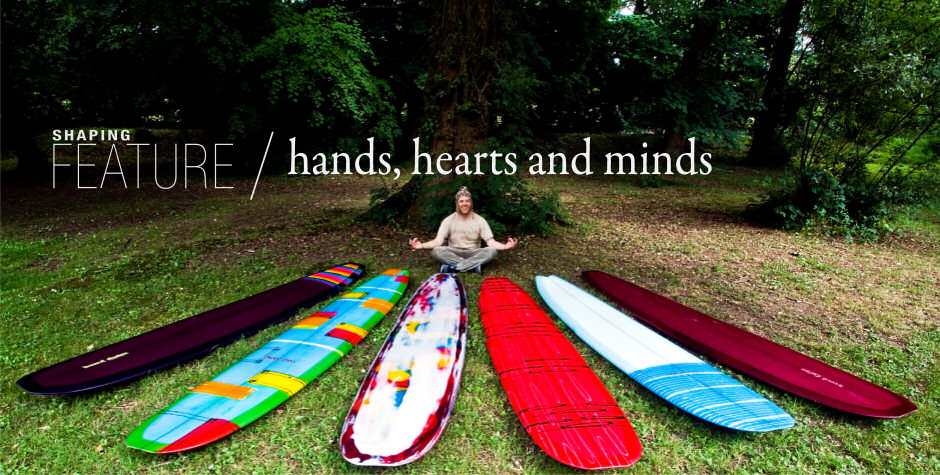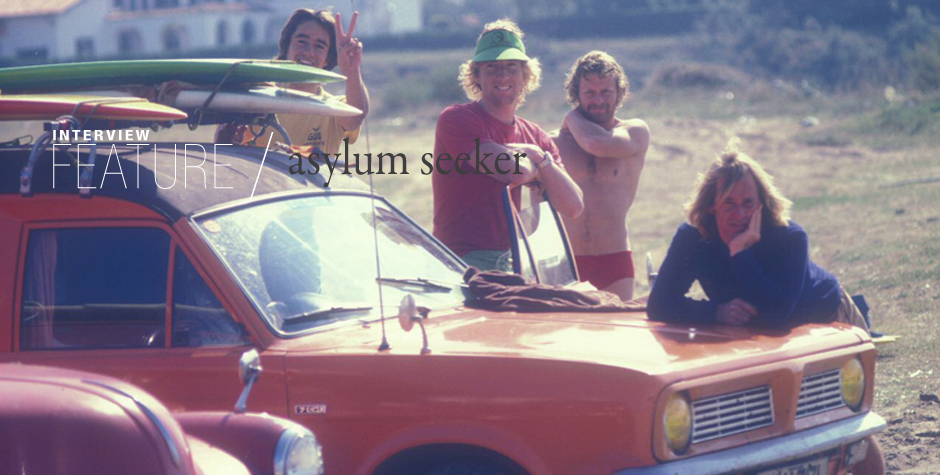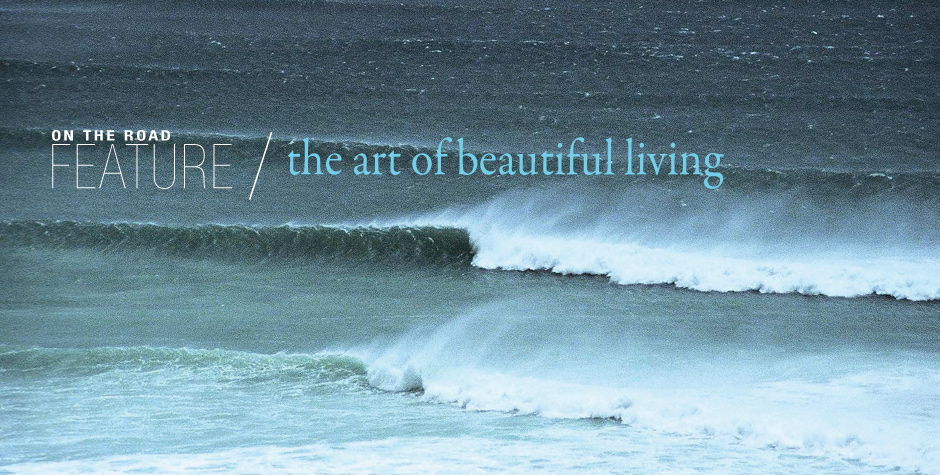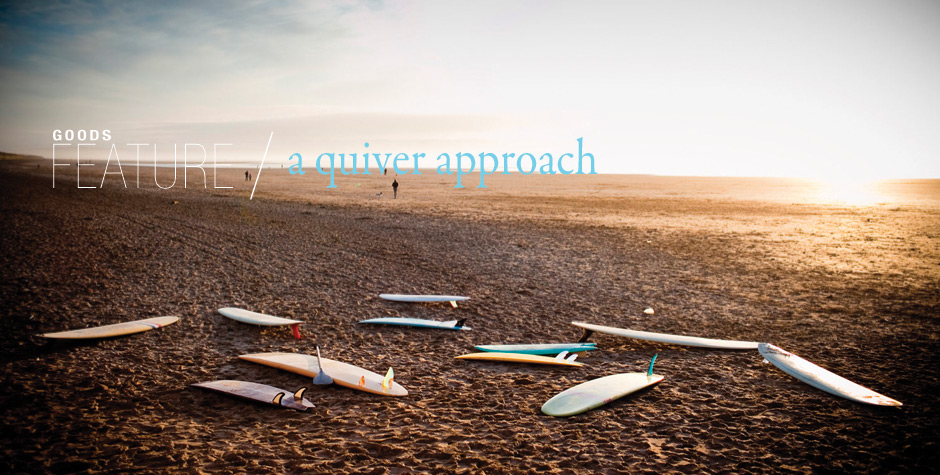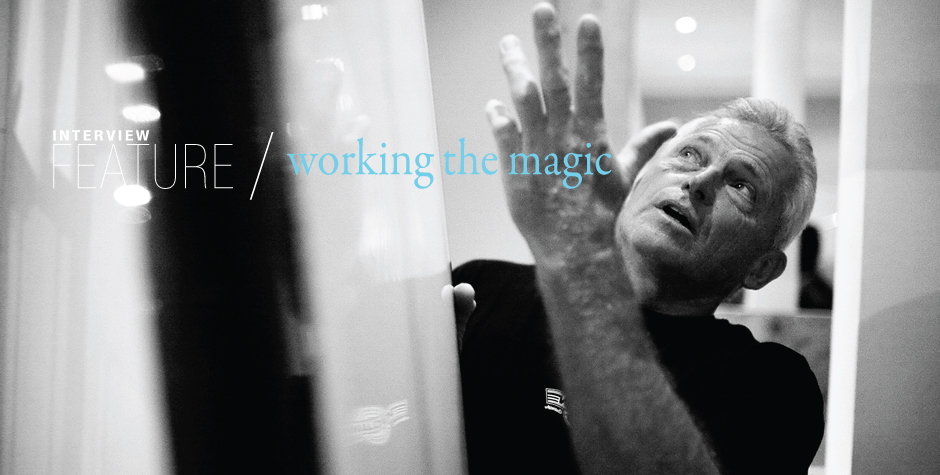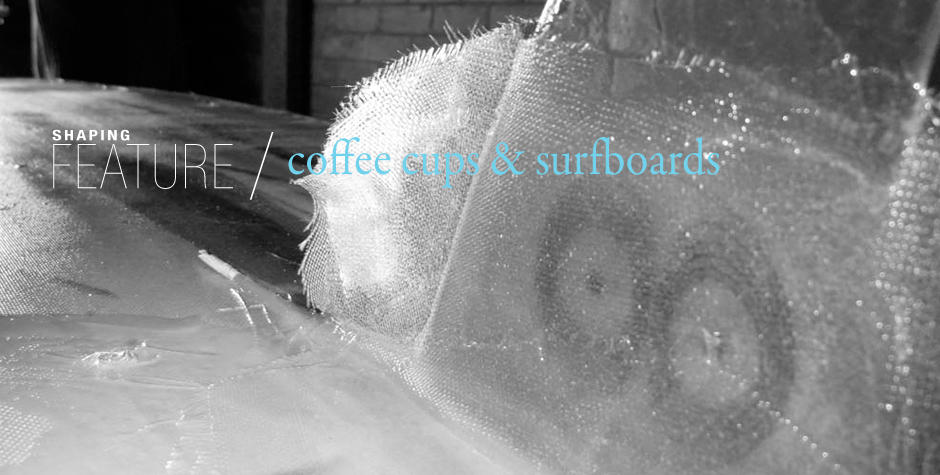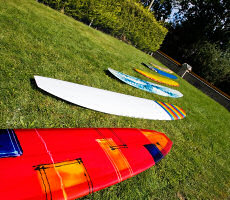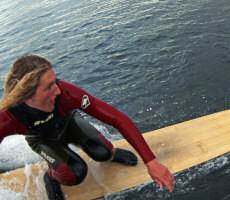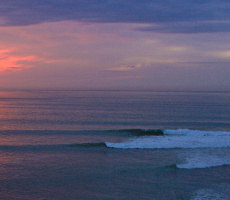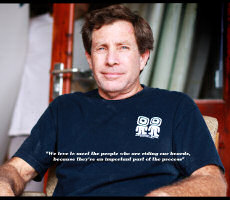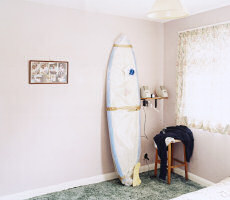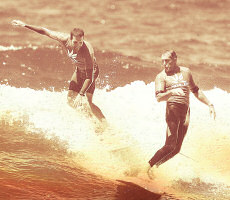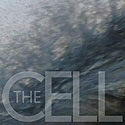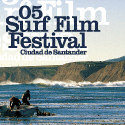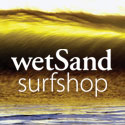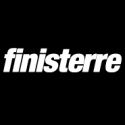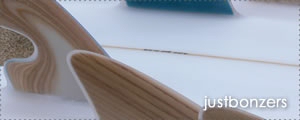Gone fishing
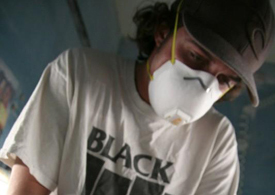 It’s a big leap from a backporch in Florida to a shaping bay at Moonlight, but under Rich Pavel’s tutelage, DJ Kane has made the transition. Famous for his performance fish, on a recent trip to Portugal he explained the origins of the Swordfish, and why he’ll never be cruising on a hull… (Versão portuguesa.)
It’s a big leap from a backporch in Florida to a shaping bay at Moonlight, but under Rich Pavel’s tutelage, DJ Kane has made the transition. Famous for his performance fish, on a recent trip to Portugal he explained the origins of the Swordfish, and why he’ll never be cruising on a hull… (Versão portuguesa.)
You’re originally from Florida, where it can’t have been hard to lay your hands on a board – why did you start shaping?
Growing up in Florida, you have one surfboard that you basically ride in whatever conditions the ocean throws at you. When I was about 14, there was a big resurgence in old boards – Channel Islands had just started making their singlefins and people were starting to look back towards fish. I didn’t know anyone who had one, and I couldn’t afford to buy one, so I decided to make them myself. My parents have always been super supportive of everything I’ve done, whether it was sports, or schooling, or surfing. I was really fortunate – they were cool enough to let me take over their back porch and ruin it with resin and paint and track foam dust into the house. When I go back home nowadays it’s cool to see my old workplace all cleaned up and nice.
What about that first board? Did it work well?
My first board was a copy of 5’8 BAT shortboard that I was riding at the time. It turned out alright. Looked sort of symmetrical. I’m not sure how it rode, actually, because I sold it to a friend before it was finished so I could make another. I came home after school in my 9th-grade year and shaped them for hours and hours. Then I convinced my mom to loan me some money to buy tools and fibreglass and stuff. The next summer I worked as a labourer for a friend’s construction company to pay her back.
A few years later you moved to California. Did Florida not offer as many opportunities for a shaper?
California is the epicentre of the surfboard industry. I decided to move here a few months before I graduated high school. Sure, I could have stayed in Florida and shaped boards – my parents would probably been happier with that – but I had an opportunity to go, and a place to stay, and seeing that I had already been out here a couple of times and seen the guys at Moonlight do their thing, it was a no-brainer. So I filled my truck with all my stuff and drove across the country a week after I graduated high school.
 Where did you start?
Where did you start?
I didn’t have any work for the first month after I moved here; I just surfed and rode around with my roommate learning all the different spots and poking my head in all the different factories. My first job was at Global Glassing – quality control and finishing boards. Shortly after I was working at Moonlight as well, going to Moonlight in the mornings and Global later. It was really cool to be working on boards for some of the biggest names in the world. Everything was new and fresh. The industry was booming and Global was making 100-125 boards a week, so I was very busy. Moonlight has never been about numbers, more about putting out one-of-a-kind beautiful boards.
And then Pavel showed up and invited you to work with him. That’s probably the dream of most young shapers out there…
I went up on the hill here in Encinitas with my roommate Jim from Lokbox fins. He introduced me to Rich and had me bring one of my fish out of the truck to show him. Rich looked at it for few minutes said some nice things and offered for me to hang out a little while and said he’d give me a ride home later. I stayed and absorbed everything I could that day. He spoke about getting together and shaping some boards and told me to give him a call. A couple weeks later we hand-shaped three fish together in his old shaping room at Channin. It was the first time I had ever used a Skil planer. Soon enough he was out of that factory and shaping over at Neptune. There was a KKL machine in one room, me in the next, and then Rich in the last room. Working with him pushed my shaping skills to a level I couldn’t have reached in 15 years shaping on mom’s porch. The number of boards going through my hands, the quality that was expected and the sheer number of designs really fast-forwarded my shaping. I don’t see Rich much anymore but I do give him lots of credit for moulding my shaping into what it is today.
 But instead of staying under Pavel’s protection, you started DK Surfboards…
But instead of staying under Pavel’s protection, you started DK Surfboards…
After about a year, Rich was travelling a lot and I was still doing a few boards for him here and there and working at Moonlight a little, but I needed to pay my bills. I had been doing a few boards under my own label and was starting to get more interest so the logical move was to start focusing on DK Surfboards. So I moved into an old shaping room at Moonlight; it was being used as a wetsand room at the time, but a lot of big names shaped in it back in the day.
You started with a line of boards inspired by Pavel, like the double-wing quad or the twin keel, but then you produced new, more performance-oriented designs. Is that just youth speaking, or how you believe boards should be?
Yeah, you know they definitely were Pavel-inspired. They were the same designs I was shaping when I was 14, but now I knew how to shape them properly – where to take the foam off, and how to get certain rail shapes and small intricacies on the bottoms. From the first time I took a planer to a blank I wanted to make the most high-performance board possible, whether it was a fish or a 6’6 round pintail. I tend to steer away from cruisers – if the board doesn’t make lots of people think “wow!” and ride nothing but that design it probably wasn’t done right, or at the very least something needs to be added or changed. No board will work for every surfer – we’re all very different
The Swordfish was the design that catapulted you into the limelight. What were you looking for when you shaped it?
The Swordfish is my most popular seller for sure. A friend of mine and long-time pro-surfer/ripper guy Kasey Curtis came to me and asked me to make him a board similar to Rich’s Speedialers. I convinced him that I could always shape one of those next time (mainly because I was shaping a lot of them) because I had an idea for a more performance fish. I had been riding a board that Daniel Thompson made for me when we were both shaping for Rich, and had begun to believe in the benefits of a wingless tail. I wanted to combine those elements with the feeling KC was getting from his speedialer. He’s had three of them now and is still ripping on his original one thanks the Mohikan’s bullet-proof glassjob!
If you were just looking for performance, wasn’t it easier to just shape shortboards?
Yeah, probably! But a shortboard has limitations just as much as any other design. Your average thruster is made for top to bottom surfing. It wants to stay in the pocket and go off the bottom, and snap off the top. The only other real benefit I find the thruster has over other fin configurations is the ability to step on the brakes and stall to get barrelled. Quads seem to outrun the barrel more than twins; they want to go out on the face and do a psycho cutback or something. But you know, different boards are meant to do different things – some are better in certain areas and lack in others. Getting back to the twins though… I really like the way they come off the top: because there’s no trailer there to slow things down it just pivots right off the fins, right under your back foot. You can really feel the difference. Guys like Akila Aipa and Rasta have figured out how to put that fin configuration on a modern looking shortboard outline and foil and make it work.
 Will we ever see a hull or stubbie on the DK label?
Will we ever see a hull or stubbie on the DK label?
Probably not! I enjoy making true singlefins – old-school vee-bottom pintails or even six-channel singlefins – but the whole roundboard, hull belly thing isn’t for me. It’s a type of surfing that I’m not trying to do – there’s a lot of trimming and trying to keep your rail engaged and do a big suicide cutback when you do finally make it to the shoulder. I’m not taking anything away from the guys that are shaping or riding them, it’s just not my style of surfing. That said, I saw Manny of Mandala surfboards zipping around on a modified hull back behind my house the other day and he seemed to be surfing it real well.
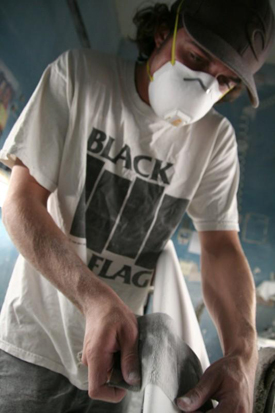 Have you taken your designs to the limit, or is there room for improvement?
Have you taken your designs to the limit, or is there room for improvement?
If that ever becomes the case, and my designs become stagnant and I’m no longer able to improve upon them or come up with new designs I’ll switch to using balsa or agave or something, or build wooden boats. I learn something with each board, whether it’s a new way to use a tool to get a certain something or it’s a new design characteristic I’m adding, there are always changes being made. Things are always evolving.
You’ve been to Portugal twice – how did you like our waves?
Portugal is insane! My mother’s side is Portuguese and my father is Irish. I was actually just up in Idaho visiting my grandfather, who’s a retired Colonel in the US Army – it’s obvious he’s where I get my craftsman gene from. He was one of nine kids; his mother was from Porto and his father from Lisboa. All his brothers were either steel workers or electricians; he’s a phenomenal woodworker, and his sister, who just passed, sang Fado for years. All Portuguese culture is cool, but your coffee and food are particularly good! The coastline is amazing, packed with slab reefs and right points, the people are beautiful, and there’s still lots of Portugal I haven’t seen. I’m pretty sure it’s a place I’ll be coming back to for years whether I have boards to shape there or not.
What did you think of the boards you saw on the European Fish Fry? How did those boards compare to what you see out in California?
I saw resin tints, wooden fins, fish, quads, bonzers, high-quality shortboards… You guys are doing it! I can’t stress how stoked I was when I walked into Board Culture for the first time and saw this state-of-the-art factory with quality glass jobs and a shaping machine and everything. Overall, Portugal’s surfboards appear to be as good as any I see coming from anywhere else. Your surf scene as a whole is still growing, and as that grows so will your boards. I imagine by the time I’m an old man your line-ups will be just as crowded as ours!
You’re still so young, but where do you see yourself in 30 years?
I would like to think I’ll be making surfboards until my hands are so arthritic I can’t hold the tools anymore. Shaping surfboards and surfing is what I have chosen to do with my life; I made a couple of key decisions a few years back and decided to pursue my career instead of going to school and so far that has worked out well for me. In 30 years I hope to have a family that I can support and live comfortably, surf everyday, and still feel the same enjoyment I get from making people custom surfboards.
